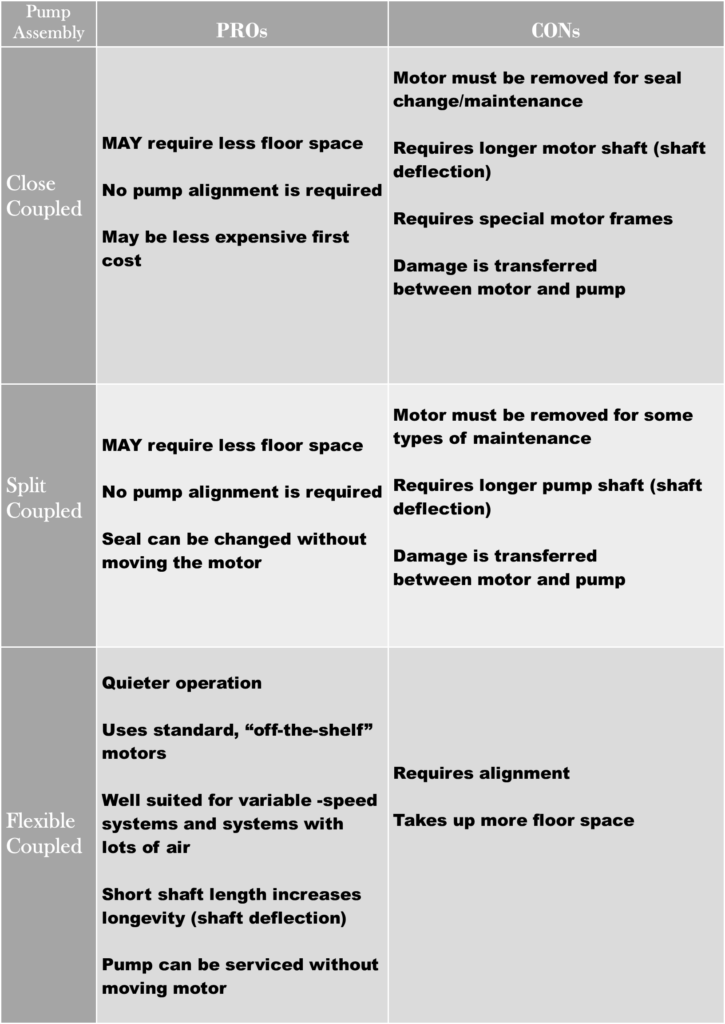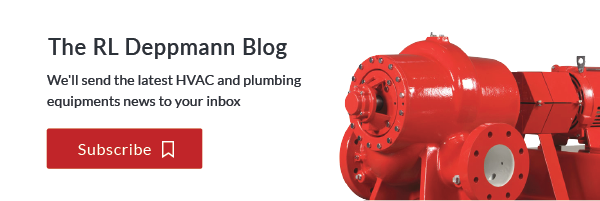When selecting the HVAC centrifugal pump, there are different pump coupling types to choose from. In the last R L Deppmann Monday Morning Minute we examined the mechanical room space required for base mounted end suction vs. base mounted vertical inline pumps. This week’s topic centers on the types of couplers available.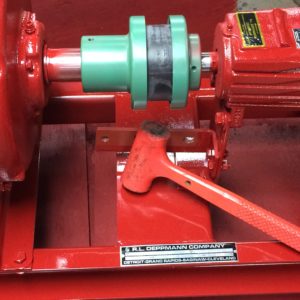
Centrifugal HVAC and plumbing pumps may be direct closed coupled or flexibly coupled. Pump couplings serve an important purpose, the greatest of which is to connect the pump to the motor for the efficient transfer of power. They also help accommodate for misalignment, making it easier to service the pump; and in the case of flexible coupled pumps, help protect the bearings.
Hydronic HVAC pumps typically have one of the following types of couplers:
Split Couplers on HVAC Centrifugal Pumps
This is a solid metal coupler that connects the pump shaft to the motor shaft. The picture on the left shows a split coupled inline pump. A close-up of the interior coupling mechanism is shown on the right. A split coupler can make the pump easier to service but notice that the coupling is made of steel and thus does not provide any flexion whatsoever. The sole purpose of the split coupling it to connect a standard frame motor to the pump end. If the motor shaft starts to vibrate due to motor bearing wear, the vibration and movement will be transferred directly to the pump. If the pump end starts to vibrate due to cavitation, operation off the end curve, mechanical seal wear due to water quality, or simply age; the vibration will be directly transferred to the motor bearings and shaft.
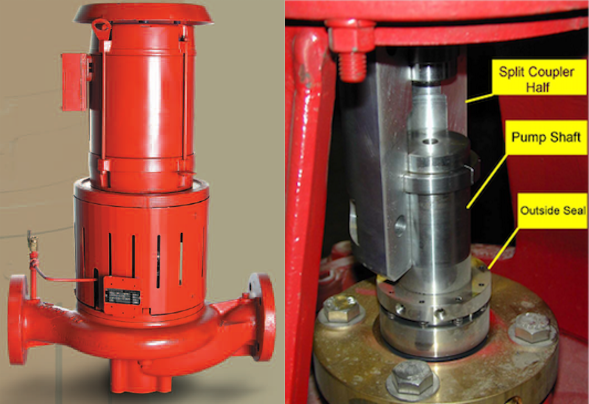
Flexible Couplers on HVAC Pumps
Flexible couplers are the type of couplers we usually see in base-mounted pumps. These couplers are typically made of a rubber material sandwiched between two metal hubs. This type of coupler joins the standard frame motor to the pump end but also provides a certain amount flexion or bending movement. The flexion of the rubber insert helps to protect motor bearings from the pump born damage mentioned above and protects the pump from motor born damage. This is important with the non-constant torque associated with HVAC pumps and especially variable-speed systems.
Flexible couplers act as a sacrificial fuse that breaks to protect the motor bearings and the pump shaft. (It is much less expensive to replace a flexible coupler than a shaft or bearing!) A flexible coupler helps compensate for various types of misalignment that occur during typical operation as shown here:
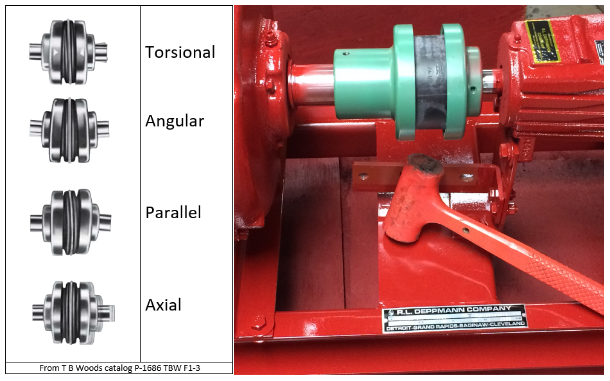
Closed Coupled or Direct Coupled HVAC Pumps
Of course, there are some pumps that do not have couplers at all. These are referred to as close coupled pumps. Close-coupled pumps have a single shaft (instead of two connected shafts) that extends from the motor to the pump body through an opening in the cover plate. The mechanical seal, shaft sleeve, and impeller are all mounted on the motor shaft. There is no bearing assembly in the pump section, so the motor bearings must absorb all of the torsional load. This means the bearings have to be large, which makes the motors somewhat special and not as readily available on larger sizes as motors on split or flexible coupled pumps.
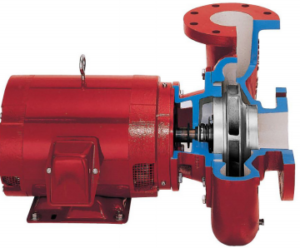
While close-coupled pumps often take up less floor space, they can be tricky to service because the motor must be removed for seal change and maintenance. An overhead gantry and crane may be required to lift the motor away from the pump for servicing if the motor is large and there is not enough horizontal space available to remove the motor. One advantage of closed coupled pumps is they do not need to be aligned. This can be helpful if you have a high speed (3600 rpm) application where the alignment tolerances are tight.
While there are PROs and CONs to all of the above pump configurations, we typically advocate base-mounted, flexible coupled pumps unless the specific application precludes them as an option (e.g. there is not sufficient floor space for a base-mounted pump.)
The table below is a handy reference for comparing the advantages and disadvantage of close coupled, split coupled, and flexible coupled pumps.
Next week, In Part 5 of this the R L Deppmann Monday Morning Minutes series, we will focus on the choice of single vs. double suction HVAC centrifugal pumps.
- Part 1: Designing for Owner Satisfaction
- Part 2: Types of Pumps and Seismic Considerations
- Part 3: Mechanical Room Space & Type of Pump Selected
- Part 5: Choosing a Single or Double Suction Pump
- Part 6: Internally Vs. Externally Flushed Mechanical Seals
- Part 7: Mechanical Seal Materials
- Part 8: Motors for HVAC Centrifugal Pumps (Continued)
- Part 9: Over speeding HVAC Pumps & Motors
- Part 10: Over Speed an HVAC Pump using a VFD
- Part 11: Best Practices for Safety and Performance

